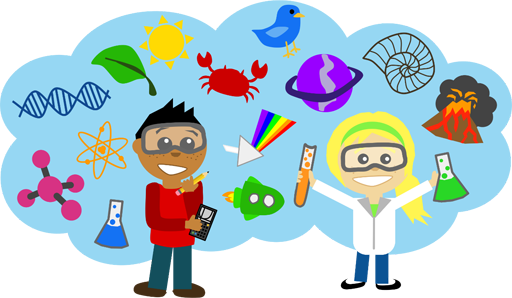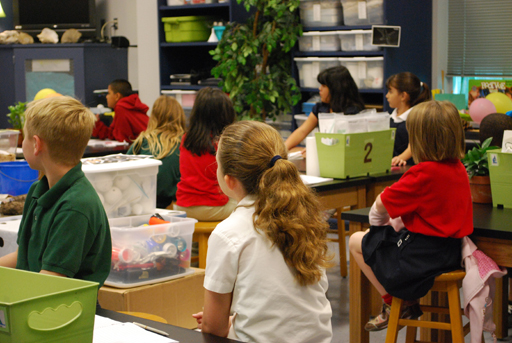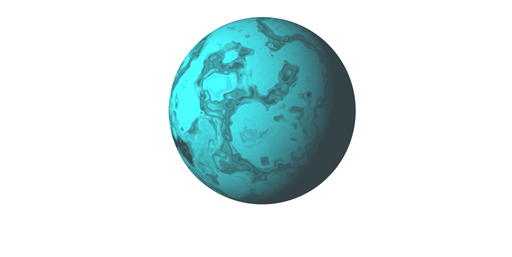Use 'Print preview' to check the number of pages and printer settings.
Print functionality varies between browsers.
Printable page generated Monday, 1 December 2025, 8:54 PM
Section 3: Building STEM capital in the classroom
Introduction
In this section we look at
- What is STEM capital? How might it be built in the classroom?
- How does STEM capital relate to unconscious bias and gender equality?
- Case-studies and examples
- Introduce classroom activities
- Short quiz
- Self-reflective exercise
Learning outcomes for section 3
By the end of this section you will have
- Understood what STEM capital is and different theories of how to build it in the classroom
- Reflected on how STEM capital relates to gender equality
- Built confidence in teaching and delivering science experiments and STEM based materials
- Gained experience in leading classroom discussion on science, STEM subjects, gender equality and stereotypes and facilitating pupil conversations and learning in relation to subject choice and school experience
Section 1 explored gender inequality, stereotyping and female underrepresentation in STEM. Section 2 considered the impact of unconscious bias in the classroom. In this section we develop the idea of ‘STEM capital’ and explore how an understanding of this concept can provide a useful framework for active interventions in the classroom. We also look at how a lack of STEM capital and unconscious bias interact in female pupil’s experience of education and in the choices that they make.
This section follows the same style as the rest of the course and aims to provide a frame within which you can work with colleagues to share, act and evaluate on the basis of your collective experience. You’ll be asked to reflect and act on some specific STEM topics, but it is important to stress that it makes no assumptions about your STEM background.
3.1 STEM Capital
There are strong societal stereotypes about gender and STEM subjects and that these stereotypes are often translated into unconscious biases among parents, teachers and pupils themselves, which can influence their performance, interest and engagement in STEM subjects. As girls get older and as subject choices are introduced, fewer girls than boys study STEM subjects.
Factors that influence education outcomes
Education researchers have long known that a range of different, and not necessarily obvious, factors contribute to success in education more broadly, as well as to specific outcomes such as engagement with STEM. These range from individual factors such as gender, birth weight or ethnicity to family influences, including socioeconomic status, mother's education, father's education, family income, and quality of the home learning environment, to school-based factors, such as pre-school/nursery effectiveness, and primary school effectiveness.
What is STEM capital?
One way to think about these issues is the idea of ‘STEM capital’, which can help us understand differences in participation in STEM subjects among different groups. It can also help design initiatives to improve participation.
The notion of STEM capital, or STEM-related forms of social and cultural capital, draws on longer established ideas of Cultural Capital pioneered by the French sociologist, anthropologist and philosopher, Pierre Bourdieu. Many of the useful sources and research papers associated with the concept refer to ‘Science Capital’ rather than ‘STEM Capital’, however, the concept is inclusive and comfortably includes Technology and Mathematics. This course uses STEM capital throughout but you will find that some of the links refer to Science Capital.
STEM capital encompasses all the STEM related knowledge, social contacts, attitudes, skills and experiences a pupil or person has and how those resources inform their engagement and choices in school. It recognises the significance of what you know, how you think, what you do and who you know in shaping your relationship with science and technology.
Activity 1
Watch the short (two minute) video produced by the enterprising science team at Kings College London https://www.youtube.com/ watch?v=A0t70bwPD6Y
Reflect on what you’ve watched. The animation argues that STEM capital is shaped and formed by
- What you know
- How you think
- What you do
- Who you know
Write down your initial thoughts on how useful the concept is in your learning log. Note any aspects that you would like to clarify or explore further. Where do think that you could have an impact on the formation of your pupils’ STEM Capital in your role as a classroom teacher? Save your notes so that you can share and develop these observations in your study group.
How STEM capital relates to gender
A STEM capital approach is fundamentally concerned with social justice. The Kings College team stress that
‘… a science capital approach is about trying to understand, identify, monitor and challenge inequalities. It means recognising the importance of power and how inequalities are perpetuated in society. A science capital approach is primarily concerned with helping to achieve improved life chances and outcomes for diverse individuals and communities.’
Recent studies and analysis have shown that the more STEM capital a young person has, the more likely they are to want to continue with STEM subjects in school and in post-16 education and to have a strong STEM/science identity.
The Kings College researchers have studied STEM capital and its influence on participation in STEM classes, subject choices and careers. They specifically looked at the role of gender.
Higher levels of science capital appear to be concentrated more among boys. According to one study, boys had significantly higher means on the science capital variable than girls.
Likewise, the proportion of boys was higher in the high science capital group, relative to their representation in the overall sample (54% vs. 46%).
They conclude that while girls perform as well as boys in math and science at a young age and are equally interested in the subjects, they aren’t developing the same levels of STEM capital.
Activity 2
Think about your classroom and experiences with people in your school. In your learning log, record your thoughts on the following questions. Do you see evidence of different amounts of STEM capital among pupils? Are there differences between boys and girls? What about among your fellow teachers?
Reminder – the 4 components are:
- What you know
- How you think
- What you do
- Who you know
Further reading: You can find out more about the ASPIRES/ ASPIRES2 and Enterprising Science research projects, based at King’s College London at www.kcl.ac.uk/aspires/ www.kcl.ac.uk/enterprisingscience
3.2 Dimensions of STEM Capital
The Enterprising Science project identifies eight key dimensions of Science Capital. Here we have extended the definitions to include STEM capital.
- STEM Literacy
- STEM-related attitudes, values and dispositions
- Knowledge about the transferability of STEM subjects
- STEM media consumption
- Participation in out of school STEM learning contexts
- Family STEM skills, knowledge and qualifications
- Knowing people in STEM related roles
- Talking about STEM topics in everyday life
Take a minute to read an overview of the 8 dimensions of science capital:
Consider what the Science Museum is doing to embed the 8 dimensions into their work: https://transformingpractice.sciencemuseum.org.uk/ 2016/ 09/ 01/ dsfasoi-pifjo-dfsfij/
Activity 3
Take a few minutes to think about the eight dimensions and note in your learning log where you might be able to address one or more of them through classroom activity or at the level of school policy. Note also what support you would need from colleagues to take these actions forward. Save your notes. You will be asked to share your thoughts with your study group.
3.3 What can be done about it?
One way to improve engagement and participation of female pupils in STEM subjects and careers would be to build STEM capital among girls.
The Kings College research suggests that STEM Capital is not fixed and that educators can support the growth of STEM Capital in their students through interventions that address the above dimensions. They note that the dimensions are contextual and comprise of a pupil’s life experience. As a result school based interventions require a reflective approach that recognises a pupil’s context and values experience. However, because STEM capital is shaped by personal context, the role of the school as an institution is also important and the Kings College Researchers argue that institutional, policies structures and practices may need to change learning contexts to support the growth of STEM capital. A one off activity or intervention in a classroom isn’t enough to remove the barriers to STEM for female pupils.
Activity 4
How is your school tackling these issues currently? Make a note of the policy and practice in your learning log that you feel is consistent with the STEM capital approach. You’ll be able to compare notes with colleagues in the group discussion.
Previous work and research on science, schools and STEM education has come to similar conclusions. Indeed, many prior recommendations, such as teaching STEM subjects as critical thinking, emphasising the broader educational and employment value of STEM subjects, and highlighting the cultural and historical achievements of science, map well onto the first four dimensions of STEM capital:
- Scientific Literacy
- Science-related attitudes, values and dispositions
- Knowledge about the transferability of science
- Science media consumption
These first four dimensions also seem like the ones where teachers and schools can have the most impact and potentially improve their pupils’ STEM capital through classroom based activity. These four dimensions also contain two of the three dimensions identified as having the most influence on anticipated future participation and identity in science compared to the others (science literacy, knowledge about the transferability and utility of science, along with family science skills and influences) (Archer et al. 2015)
It’s also worth considering how we build STEM capital in teachers as well. Improving STEM capital in teachers will increase engagement and confidence in the science content for teachers themselves, which should improve the quality and effectiveness of interactions with pupils.
3.4 Building STEM capital in pupils and teachers
STEM Literacy is an important dimension of the STEM capital that an individual may acquire and it relates closely to the second dimension of attitudes, values, dispositions, experiences and behaviours. Both dimensions are closely tied to knowing and valuing science as an approach that applies critical thinking to better understand the world around us. In this section of the course we’ll explore this aspect of science and ask how you might build your own STEM capital and support the development of STEM capital in others.
Historically, the present day division between STEM and the humanities has been less clear-cut; the distinction between two cultures is a recent one. Emphasising the similarities with other subjects, including with education and teaching, is one way to foster familiarity with STEM subjects.
When considering science one can look at it from a content perspective, the things that scientists look at and the theories they develop, or a process perspective, how is it scientists look at the world. This section suggests that developing STEM literacy and positive values and attitudes (the first two dimensions of STEM capital) is not a question of knowing more facts, but of understanding the process, the critical thinking and the kinds of reasoning employed in scientific inquiries and making these more familiar and accessible to pupils. There are similarities between scientific reasoning and the kinds of reasoning employed in professional practice in education. Indeed Einstein noted that science does not differ greatly from the way we approach problems in our everyday lives. Problem solving is deeply embedded in our understanding of what it means to an effective learner.
Activity 5
There’s a legend that says when the world was created three pillars were erected on the floor of the temple of Benares. On the left hand column were placed 64 gold discs of diminishing size (see image). The priests were instructed to reassemble the discs on one of the other pillars with the proviso that only one disc could be moved at a time and a larger disc must never be placed on top of a smaller one. By the time the task was finished the world would end.
If you move one disc a second how long is it until the end of the world?
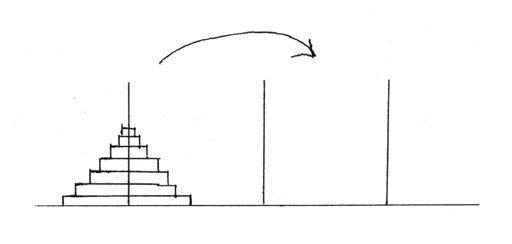
You can try to complete this puzzle online.
Hint: you might want to start by thinking about a smaller number of discs.
Note: what’s interesting is how you go about tackling this – the process. Don’t worry if you can’t reach a conclusion but make notes on the way you tackled the problem. What are some different ways of approaching this problem?
The process of trying different methods and learning from what doesn’t work highlights the importance of problem solving which is an integral skill in all STEM activities, subjects and professions.
Answer
the process – Watch this YouTube video to reveal the most efficient process
number of seconds/years to the end of the world – Answer is 2 64 – 1 seconds which is just under 600 billion years!!!
3.5 Science as a human activity
Beginning with Observation
This section is intended to provide a brief introduction to scientific thinking and approaches. Developing a better understanding of science as a human activity can build understanding and develop the first four dimensions of STEM capital. More familiarity and a better understanding of the approaches and methodologies that scientists use will directly improve scientific literacy. However, it can also improve comprehension and interest in relation to scientific media, the value of science to individuals and society, and to understanding the transferability of science to other areas.
The first four dimensions of STEM capital are:
- Scientific Literacy
- Science-related attitudes, values and dispositions
- Knowledge about the transferability of science
- STEM media consumption
Science is about the observable. We might observe something in the world, the shape of a rock formation, a pattern in the night sky, or the different beak shapes of finches. These observations lead scientists to look at how these confirm existing ways of knowing about the world, or whether they require a new explanation. Even as we look at the very big, the distant, the miniscule, it is still about observation. Even when we use machines we typically ask these machines to collect data and present it to us, and control and monitor the machine as if it is an extension of what we see. Let’s start with how science proceeds through what we see with our eyes.
Case study – ‘discovering’ a planet
William and Caroline Herschel (brother and sister), spent many hours over many years observing the night sky, first on standard telescopes and later on telescopes they designed and built themselves. They were among the first to appreciate the depth of the night sky, to think of it not as a flat scene but akin to a murky sea, where, through improving our ability to see into the depths one could see into space. Through continued observation they were able to read the night sky, scanning for what ought to be there, and noting anomalies. One such anomaly was spotted by William in March 1781 and then explored more systematically by William and Caroline through to April. It was clear it was not a comet, as it lacked a tail, but it took a series of observations and measurements to convince them it was a planet, and a series of further observations by astronomers in the UK and more widely to accept the “discovery” of the seventh planet in the solar system, subsequently named Uranus (Holmes 2008). Of course such discoveries need inverted commas, as the notion one can discover something that already exists, or whether it exists once one discovers it is contentious itself.
Moving Beyond Observation
Much of what scientists do is concerned with verifying or testing existing theories. Designing experiments, which provide structured opportunities to collect data to support existing theories. The everyday approach to repeating experiments to observe predicted outcomes is a key part of learning science, developing the skills to conduct and then later develop experiments is part of a scientist’s training.
However, science also proceeds through intuition. You start from existing explanations for a phenomena and a sense these do not explain what you have observed. You need a new theory or hypothesis. This might come from observing something in the world, as the case study below, on Darwin illustrates, or it may come from testing somebody else’s theories and finding they do not offer a suitable explanation for observed reality or the match the results of the experiment.
Case study Darwin and the Galapagos Finches
Darwin’s famous trip on the ship, Beagle, took him amongst other places to the Galapagos Isles; a small group of relatively recently formed volcanic islands. As he did throughout his journey, Darwin collected specimens, boxed them and shipped them back to the UK. On examining the different finches from the different islands he noted they were quite different from each other and those on the mainland.
Activity 6
What do you think Darwin concluded from his observations?
Discussion
The finches all evolved separately on the individual islands from a common ancestor.
Darwin had observed something in the world that could not be easily or comfortably explained by existing theories of how animals came to have the forms they did. However, he would have been aware of the idea of natural selection over generations playing a part in the development of distinct species, not least because his grandfather Erasmus had himself toyed with these ideas.
Darwin was cautious, one does not build a theory from single or even groups of observations, Darwin slowly developed a theory, “tested” against his and other observations until he felt the evidence was credible.
Science is human
Beyond the similarities with other subjects, and the emphasis on critical thinking, it’s important to recognise that science has an inevitable and strong human element. Science isn’t simply a neutral description of the world; scientists, scientific approaches and STEM subjects are embedded in and shaped by the world around them. There are also psychological factors at work. There are connections here with our discussion of unconscious bias, for instance confirmation bias (the tendency to focus on evidence that confirms your prior beliefs, over evidence that challenges them – see section 2.7) can be a particular challenge in interpreting new findings or the results of experiments. Like in any other subject, certain theories become entrenched, and it’s hard for people to move from one view to another. New ideas are resisted for social and cultural reasons in the face of compelling evidence. The slow accumulation of evidence against a theory is resisted until it can no longer be denied.
Activity 7
Can you think of a simple science activity, experiment or investigation that you could use in the classroom? If you want to find ideas you could talk to science teachers in your school, or try looking at:
- https://www.britishscienceweek.org/ plan-your-activities/ activity-packs/
- https://www.stem.org.uk/ resources/ search?f[0]=field_subject:67
Make notes on the opportunities for developing STEM literacy, values and attitudes with pupils in the classroom using your chosen option. Capture your thoughts and your questions in your learning log for sharing with colleagues.
3.6 Knowledge about the transferability of science
We discussed in section 1 how the STEM sector in Scotland was an important and growing part of the Scottish economy and that women were currently underrepresented in STEM careers. It’s likely that the sector’s requirements will only be reached if more women enter the STEM workforce.
The Royal Academy of Engineering forecast that the STEM sector needs 160,000 engineers, scientists and technicians per year by 2020 (http://www.raeng.org.uk/ publications/ reports/ jobs-and-growth)
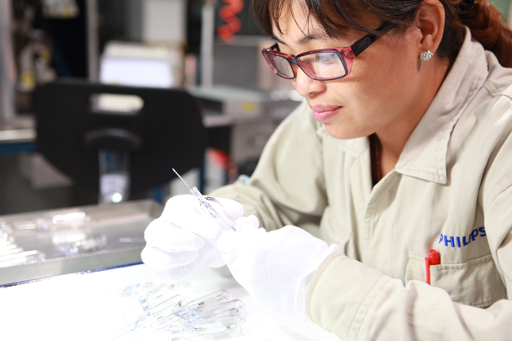
However, there are lots of additional and transferable benefits to studying STEM subjects at school and beyond. Familiarity and comfort with math and science are an increasing requirement in many jobs, even if they do not require a STEM degree. Math and science skillsets should be an essential aspect of future-proofing the aspirations of any pupil, and would provide tangible benefits to most occupations and career paths.
A child with high maths scores at age 10 is likely to earn significantly more at age 30 than others, even after pupil characteristics and later qualifications are taken into account. (https://www.gov.uk/ government/ uploads/ system/ uploads/ attachment_data/ file/ 190625/ Reading_and_maths_skills_at_age_10_and_earnings_in_later_life.pdf)
Those who work in a STEM occupation earn 19 per cent more than workers in other occupations. (Hay Group, 2016)

Beyond your world of work, increased STEM capital and knowledge of science and math will enhance anyone’s appreciation and understanding of the world around them. Many of the things that dominate our news, social media and conversations have a strong basis in science. High STEM capital helps us appreciate, enjoy and interpret stories of space exploration, news of medical breakthroughs or developments in computing or robotics.
Improved STEM capital also makes us better citizens and increases our understanding and engagement with more complex scientific issues, such as climate change or the value of vaccinations.
Activity 8
STEM media – consider the following articles on recent scientific progress and breakthroughs. Select one or two that you might be able to teach in a non-STEM class, such as personal, social, health education, history, geography, etc.
- http://discovermagazine.com/ 2010/ oct/ 12-most-important-science-trends-30-years
- https://www.scoopwhoop.com/ inothernews/ 15-discoveries-of-the-decade/ #.r3ej4wfnt
Note down in your learning log your reflections to the following questions:
How could you incorporate this topic into your class?
How could you use this topic to build STEM capital in one (or more) of the 8 dimensions?
How will you mitigate any stereotypes or unconscious biases that people bring into the classroom?
Activity 9 Quiz 3
You can now try Quiz 3.
3.7 Group session – reflecting on the section so far
This section of the course provides an opportunity to reflect, share experiences and discuss the ideas that you have encountered so far. How you do this will depend on the number of people in your study group and the time you have available. As experienced educators you will bring your own ideas and experience to bear on how you organise the discussion.
We suggest that you choose one person to facilitate and another to take notes and share action points at the end of the session. You should allow at least an hour for the session.
Compare notes on your reactions to the activity in section 3.2 where you reflected on the concept of STEM capital. Take turns to share your recorded reflections and your questions.
In section 3.3 you reflected on where you might be able to address one or more of the eight dimensions of STEM capital through classroom activity. Pool your observations – how much consensus is there? Talk through your differences.
Did anyone have any ideas on building family science skills and influences? This is the sixth dimension of science capital and one of the dimensions identified by researchers as most important for pupils’ subject and career choices. It’s also the hardest one for schools and teachers to influence. Are there ways of engaging with parents, carers or potential role models in any classroom projects or activities in relation to STEM? If students don’t have any family science capital are other ways to begin to build this?
Suggested resources for engaging with parents: https://www.oxfordsparks.ox.ac.uk/ justaddimaginationhttps://www.oxfordsparks.ox.ac.uk/ sites/ oxfordsparks.ox.ac.uk/ files/ STEM%20Futures%20brochure.WEB_.12Sep_1.pdf
3.8 Group session – action planning
The aim of this section is to develop a plan for trying out ideas with your pupils. The learning outcomes for pupils are that at the end of the activities they will be able to:
- Understand the concept of STEM capital
- Reflect on how STEM capital relates to gender equality
- Gain familiarity with scientific reasoning, science experiments and STEM based materials
There is one set activity and further suggested outline activities that cover these three learning outcomes and you can download them:
Classroom Activities on STEM capital
Working as a group (or in subgroups each with a note taker) work together to design one or more classroom interventions. In section 3.6 you all selected an activity to look at in more detail in the group. Compare notes on your choices and the questions that you noted for the group.
Discuss. This is an opportunity to share the diverse knowledge and experience that will exist in your group.
Choose one of the options and work together to produce a lesson plan. In producing the plan you should have two priorities in mind:
- What are your intended learning outcomes and how do these contribute to the development of STEM capital?
- How does the lesson plan recognise possibilities of gender bias and how will you structure your role in the activity to avoid this.
You can now go to Section 4: Next steps and developing a whole school approach
